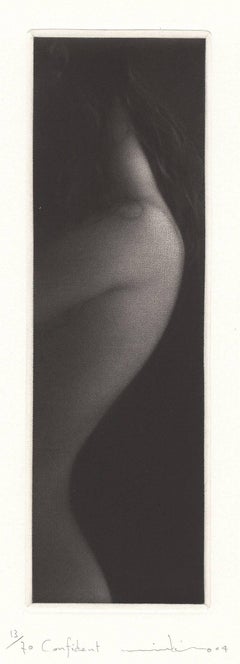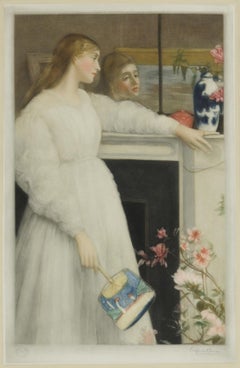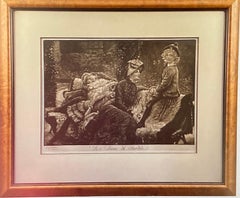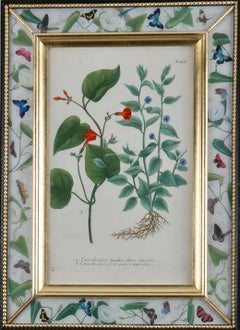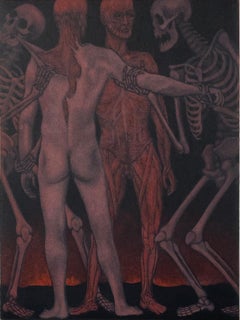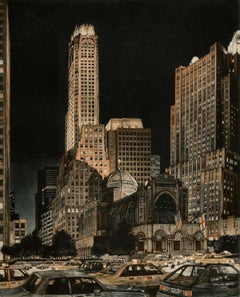Mezzotint Figurative Prints
Early 2000s Contemporary Mezzotint Figurative Prints
Mezzotint
1920s Pre-Raphaelite Mezzotint Figurative Prints
Mezzotint
19th Century Impressionist Mezzotint Figurative Prints
Mezzotint
Mid-18th Century Mezzotint Figurative Prints
Handmade Paper, Engraving, Mezzotint
21st Century and Contemporary Contemporary Mezzotint Figurative Prints
Mezzotint
1990s Contemporary Mezzotint Figurative Prints
Mezzotint
1980s Mezzotint Figurative Prints
Mezzotint
Early 1900s Victorian Mezzotint Figurative Prints
Mezzotint
Late 20th Century Contemporary Mezzotint Figurative Prints
Mezzotint
2010s Contemporary Mezzotint Figurative Prints
Paper, Ink, Mezzotint, Etching, Aquatint
18th Century Mezzotint Figurative Prints
Mezzotint
1920s Modern Mezzotint Figurative Prints
Mezzotint
1960s Mezzotint Figurative Prints
Etching, Mezzotint
Mid-18th Century Mezzotint Figurative Prints
Handmade Paper, Engraving, Mezzotint
Late 20th Century Surrealist Mezzotint Figurative Prints
Mezzotint
18th Century Mezzotint Figurative Prints
Watercolor, Mezzotint
1990s Contemporary Mezzotint Figurative Prints
Mezzotint
21st Century and Contemporary Contemporary Mezzotint Figurative Prints
Mezzotint
2010s Contemporary Mezzotint Figurative Prints
Paper, Ink, Mezzotint, Etching, Aquatint
2010s Contemporary Mezzotint Figurative Prints
Mezzotint
1880s Impressionist Mezzotint Figurative Prints
Mezzotint
18th Century Mezzotint Figurative Prints
Watercolor, Mezzotint
18th Century Mezzotint Figurative Prints
Watercolor, Mezzotint
Mid-18th Century Mezzotint Figurative Prints
Engraving, Mezzotint
18th Century Mezzotint Figurative Prints
Watercolor, Mezzotint
Mid-18th Century Mezzotint Figurative Prints
Engraving, Mezzotint
18th Century Mezzotint Figurative Prints
Watercolor, Mezzotint
Mid-18th Century Mezzotint Figurative Prints
Handmade Paper, Engraving, Mezzotint
18th Century Mezzotint Figurative Prints
Watercolor, Mezzotint
18th Century Mezzotint Figurative Prints
Watercolor, Mezzotint
Mid-18th Century Mezzotint Figurative Prints
Engraving, Mezzotint
18th Century Mezzotint Figurative Prints
Watercolor, Mezzotint
18th Century Mezzotint Figurative Prints
Watercolor, Mezzotint
Mid-18th Century Mezzotint Figurative Prints
Engraving, Mezzotint
Mid-18th Century Mezzotint Figurative Prints
Engraving, Mezzotint
1720s Old Masters Mezzotint Figurative Prints
Mezzotint
Mid-18th Century Mezzotint Figurative Prints
Handmade Paper, Engraving, Mezzotint
18th Century Mezzotint Figurative Prints
Watercolor, Mezzotint
18th Century Mezzotint Figurative Prints
Watercolor, Mezzotint
Mid-18th Century Mezzotint Figurative Prints
Engraving, Mezzotint
Mid-18th Century Mezzotint Figurative Prints
Engraving, Mezzotint
18th Century Mezzotint Figurative Prints
Watercolor, Mezzotint
18th Century Mezzotint Figurative Prints
Watercolor, Mezzotint
18th Century Mezzotint Figurative Prints
Watercolor, Mezzotint
18th Century Mezzotint Figurative Prints
Watercolor, Mezzotint
18th Century Mezzotint Figurative Prints
Watercolor, Mezzotint
18th Century Mezzotint Figurative Prints
Watercolor, Mezzotint
18th Century Mezzotint Figurative Prints
Watercolor, Mezzotint
18th Century Mezzotint Figurative Prints
Watercolor, Mezzotint
18th Century Mezzotint Figurative Prints
Watercolor, Mezzotint
18th Century Mezzotint Figurative Prints
Watercolor, Mezzotint
Early 2000s Modern Mezzotint Figurative Prints
Mezzotint
Early 20th Century Dutch School Mezzotint Figurative Prints
Mezzotint
Early 20th Century English School Mezzotint Figurative Prints
Engraving, Mezzotint
Early 2000s American Modern Mezzotint Figurative Prints
Mezzotint
18th Century Mezzotint Figurative Prints
Laid Paper, Mezzotint
Early 20th Century American Modern Mezzotint Figurative Prints
Mezzotint
1990s Contemporary Mezzotint Figurative Prints
Mezzotint
Mid-19th Century English School Mezzotint Figurative Prints
Engraving, Mezzotint
21st Century and Contemporary Contemporary Mezzotint Figurative Prints
Mezzotint
